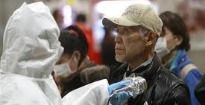Japan Doubles Radiation Estimates
Japan has more than doubled its initial estimate of radiation released from the crippled Fukushima nuclear plant in the week after the March 11 tsunami, ahead of the launch of an official probe Tuesday.
The nation's watchdog, the Nuclear and Industrial Safety Agency (NISA), now says it believes 770,000 terabecquerels escaped into the atmosphere in the first week -- compared to its earlier estimate of 370,000 terabecquerels.
The findings were released on the eve of the first meeting Tuesday of an independent 10-member academic and expert panel that will look into the causes of the world's worst nuclear accident since Chernobyl a quarter-century ago.
The group's leader, a Tokyo University researcher on human error, Yotaro Hatamura, said at the meeting that "nuclear power has higher energy density and is dangerous. It was a mistake to consider it safe".
NISA's new figure is closer to that of Japan's independent Nuclear Safety Commission which had initially estimated a release at 630,000 terabecquerels in the first month.
The revision, almost three months after the quake, is likely to fuel criticism of the initially slow and vague flow of information from the government, and plant operator Tokyo Electric Power Company (TEPCO).
Japanese experts have stressed that most of the radiation released in the first days after the quake, amid a series of hydrogen explosions at the plant, was blown across the Pacific Ocean, not over inhabited areas.


